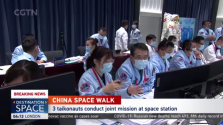I see what you mean. I'm focusing on the solar power satellites (SPSs); I'm leaving anything beyond that for another day.
In your scenario, a lot of mass would have to appear by magic at L5, if you want to make the solar panels there. If you don't believe in magic, then the raw silicon dioxide would have to come from somewhere, like the lunar surface, asteroid surface, etc. The propellants to move that SiO2 would have to be there, somehow. Perhaps we could find an asteroid with a lot of water, a lot of rock, AND a large and nearby source of energy. Until then, we will probably have to land the water on Luna somehow.
Remember that the Earth has 80x the mass of the Moon, so the energy required to launch off the Moon is a lot less.
Plus I think building solar power satellites on the moon is too speculative. You would need very low fuel costs to justify transporting and developing a factory complex on the moon. It would be easier to build solar panels on Earth and launch them.
But there will be a ready market for low cost fuel refuelling in space

